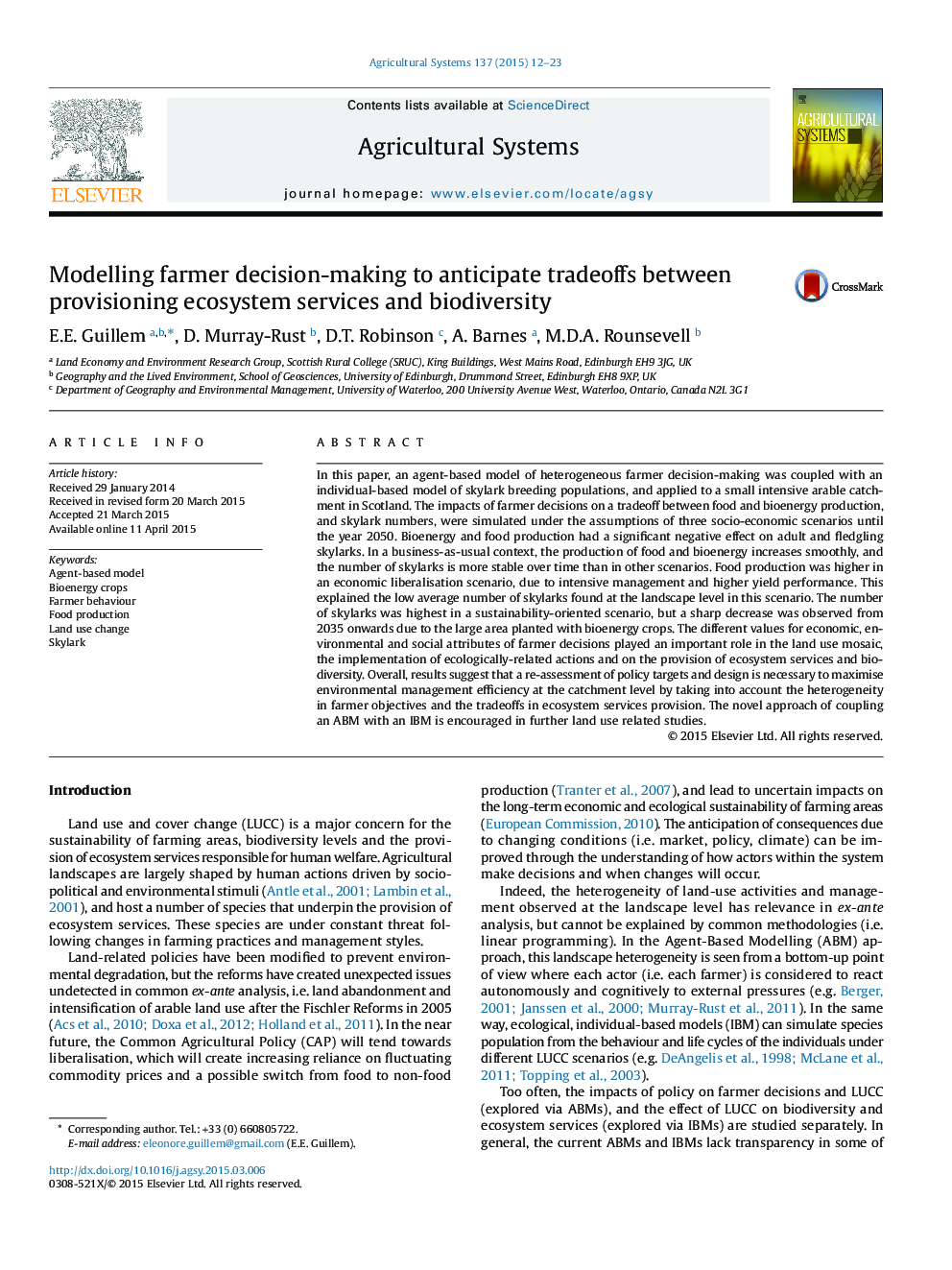| کد مقاله | کد نشریه | سال انتشار | مقاله انگلیسی | نسخه تمام متن |
|---|---|---|---|---|
| 4491153 | 1623233 | 2015 | 12 صفحه PDF | دانلود رایگان |
• An agent-based model of farmer decision-making is coupled with a model of skylark.
• Different ecosystem services trade-offs result from three socio-economic scenarios.
• Skylarks are adversely affected by bioenergy cropping and food production.
• Bioenergy cropping rise in the sustainable scenario.
• Food production is very high in the economic liberalisation scenario.
In this paper, an agent-based model of heterogeneous farmer decision-making was coupled with an individual-based model of skylark breeding populations, and applied to a small intensive arable catchment in Scotland. The impacts of farmer decisions on a tradeoff between food and bioenergy production, and skylark numbers, were simulated under the assumptions of three socio-economic scenarios until the year 2050. Bioenergy and food production had a significant negative effect on adult and fledgling skylarks. In a business-as-usual context, the production of food and bioenergy increases smoothly, and the number of skylarks is more stable over time than in other scenarios. Food production was higher in an economic liberalisation scenario, due to intensive management and higher yield performance. This explained the low average number of skylarks found at the landscape level in this scenario. The number of skylarks was highest in a sustainability-oriented scenario, but a sharp decrease was observed from 2035 onwards due to the large area planted with bioenergy crops. The different values for economic, environmental and social attributes of farmer decisions played an important role in the land use mosaic, the implementation of ecologically-related actions and on the provision of ecosystem services and biodiversity. Overall, results suggest that a re-assessment of policy targets and design is necessary to maximise environmental management efficiency at the catchment level by taking into account the heterogeneity in farmer objectives and the tradeoffs in ecosystem services provision. The novel approach of coupling an ABM with an IBM is encouraged in further land use related studies.
Journal: Agricultural Systems - Volume 137, July 2015, Pages 12–23
